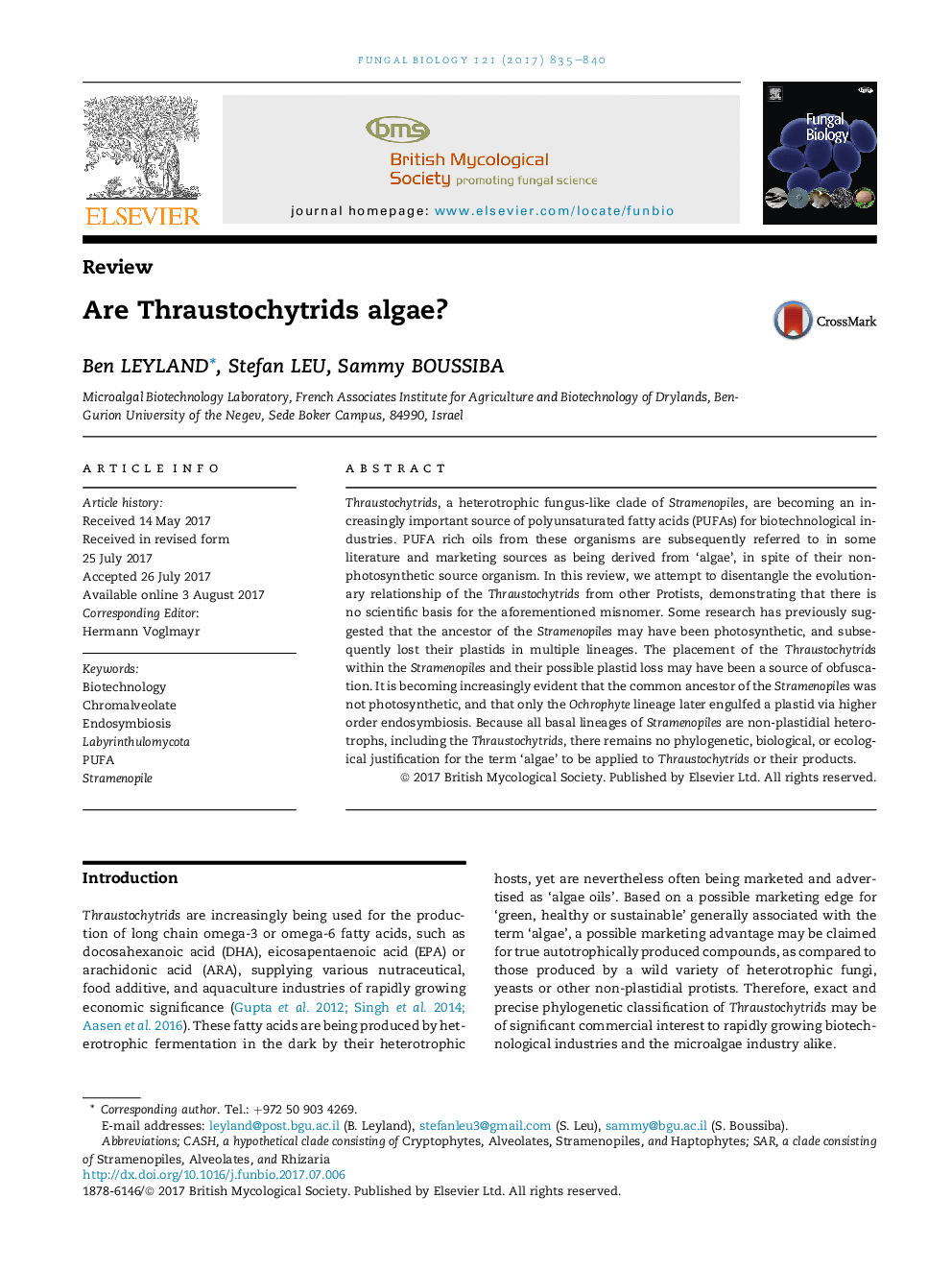| Article ID | Journal | Published Year | Pages | File Type |
|---|---|---|---|---|
| 5739552 | Fungal Biology | 2017 | 6 Pages |
â¢Thraustochytrids are biotechnologically important, heterotrophic, fungus-like Stramenopiles.â¢Thraustochytrids are not algae because they are not photosynthetic and lack a plastid.â¢Evidence suggests that the common ancestor of the Stramenopiles did not harbour a plastid.
Thraustochytrids, a heterotrophic fungus-like clade of Stramenopiles, are becoming an increasingly important source of polyunsaturated fatty acids (PUFAs) for biotechnological industries. PUFA rich oils from these organisms are subsequently referred to in some literature and marketing sources as being derived from 'algae', in spite of their non-photosynthetic source organism. In this review, we attempt to disentangle the evolutionary relationship of the Thraustochytrids from other Protists, demonstrating that there is no scientific basis for the aforementioned misnomer. Some research has previously suggested that the ancestor of the Stramenopiles may have been photosynthetic, and subsequently lost their plastids in multiple lineages. The placement of the Thraustochytrids within the Stramenopiles and their possible plastid loss may have been a source of obfuscation. It is becoming increasingly evident that the common ancestor of the Stramenopiles was not photosynthetic, and that only the Ochrophyte lineage later engulfed a plastid via higher order endosymbiosis. Because all basal lineages of Stramenopiles are non-plastidial heterotrophs, including the Thraustochytrids, there remains no phylogenetic, biological, or ecological justification for the term 'algae' to be applied to Thraustochytrids or their products.
